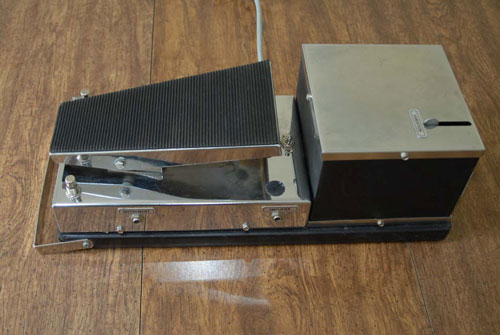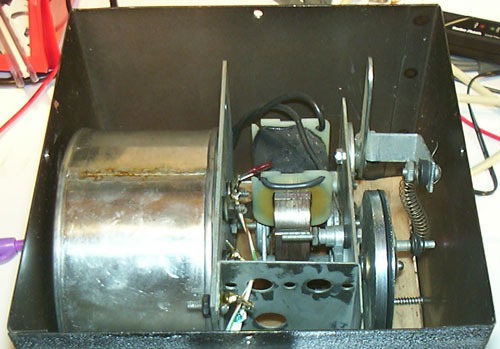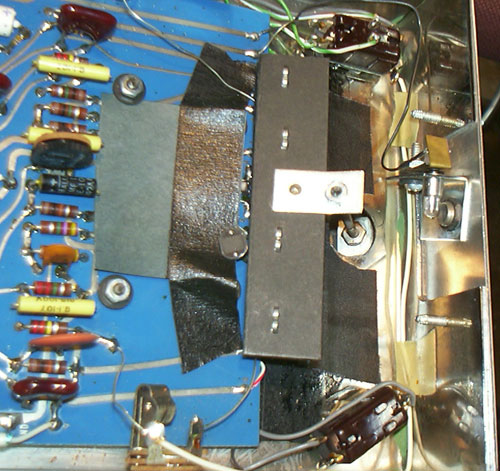Oil Can Delays
Audio August 11th, 2007The other day I had a chance to play with a Morley RWV Rotating Wah pedal that was made in about 1973. It had the standard volume pedal that became a wah pedal when you pushed a button. It also had another button that activated the “rotating sound” effect which was achieved with an oil can delay. I’d heard about these devices before but I’d never seen one. Of course I had to take the pedal apart to see what was inside.

An oil can delay is basically a rotating capacitor. A motor turns a drum made out of some insulating material like rubber. A wire brush “writes” the audio signal as a static charge onto the surface of the drum as it spins. Since the drum is an insulator the electrons stay put.
Also in the can is a “read” brush that picks up the charge from the drum and sends it off to be amplified. The delay time is determined by how far apart the two wire brushes are and how fast the drum is rotating.
How did they solve the problem of the electrons leaking off into the air? That’s where the oil comes in. The drum is filled with this “mystery oil” that acts as a protective layer over the drum surface to keep the charge in place until it is ready to be read. It also contains conductive particles that help to reduce noise and maintain a stronger signal.
There has been much speculation as to what the mystery oil actually is. If you ever need to replace the oil in your delay (sometimes they leak or dry out), look for Union Carbide “Ucon” LB-65 oil. I understand that you can still get it from Union Carbide, but it is very expensive. A quick check on eBay suggests that you can get 4oz for about $25 (a typical delay only requires about an ounce).
So back to the pedal. Here’s what I saw:

You can see the motor and the oil can. One interesting thing here is the “variation” lever; it basically pulls on a spring that is attached off-center to the motor so that it makes it rotate unevenly and provides varying timing on the delay. It’s just so gratifyingly mechanical.
Here’s the part under the pedal:

Mostly it just looks like a bunch of 1973-ish electronics. There is one clever thing of note, however. The pedal is not mechanically connected to a potentiometer. Instead it moves a black curtain between the back of the power light and a photo cell. Pedal goes up, light gets blocked. Pedal goes down, light reaches photo cell. With this very creative arrangement you never have to worry about your pot getting all scratchy. Of course if your power light burns out the pedal will quit working.
If you want to learn more about oil can delays here is a good site to check out:


September 18th, 2012 at 2:40 AM
Hey, I write a column for Vintage Guitar magazine, and am working on a piece on the Morley RWV. I’m curious if you’d be willing to share with me your photo of the interior of the unit showing the oil can drum? I’d need a high-res 300dpi copy, and would of course give credit. Thanks! Michael Dregni